When the US entered WWI in April 1917, its navy was not ready. Little planning had been done for what it would do in the event that America joined the hostilities, and a rigid version of Mahan's doctrines, with particular emphasis on concentration of the battle fleet and offensive action, continued to dominate American strategic thinking despite the events of the previous three years. This resulted in considerable tension between the Navy Department and the Admiralty. The Americans castigated the British for their timidity and pushed for an offensive against the German submarine bases, President Wilson himself accusing them of "hunting hornets all over the farm and leaving the nest alone".
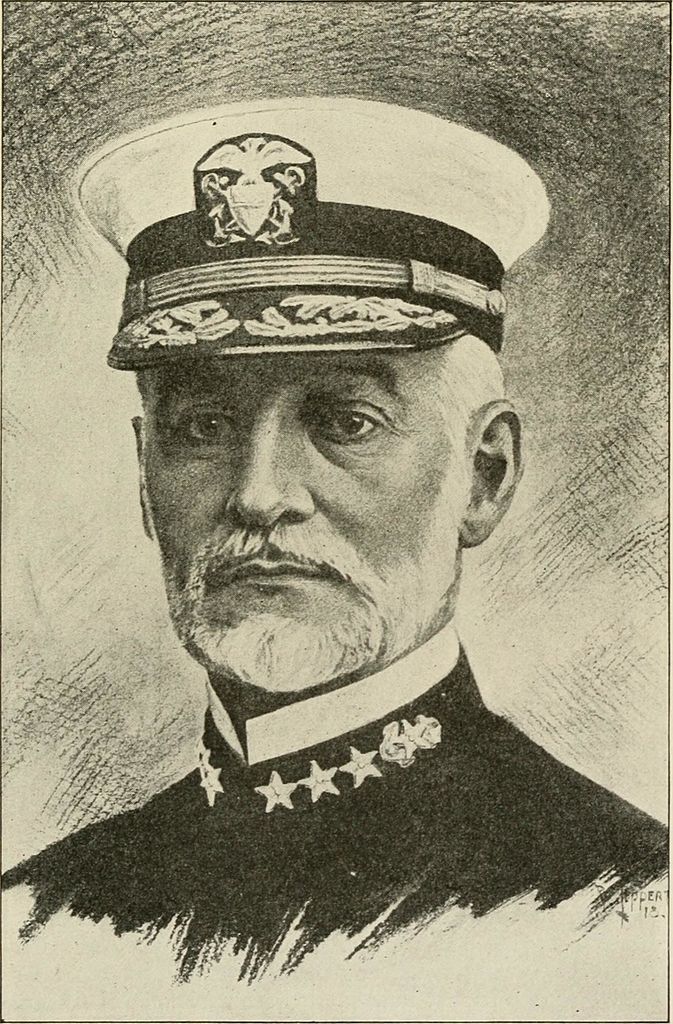
William Sims
The British had long ago figured out that this sort of offensive would be ruinously expensive, and instead requested destroyers to help in the fight against the U-boats that threatened to starve their population. The Americans agreed to send only a few ships, fearing that more would denude their battle fleet, violating Mahan's dictates on concentration. The American attitude was at least in part due to concerns about the stability of the alliance with Britain, as well as lingering Anglophobia on the part of many senior leaders. The only real exception was William Sims, a committed Anglophile and personal friend of John Jellicoe who was made commander of US naval forces in Europe and quickly came under suspicion as a mouthpiece for the Admiralty.1 Throughout the first months of American involvement, there was a constant battle between the two sides over the relative importance of the battle fleet and anti-submarine forces, with American planners regularly focusing on long-term issues above winning the immediate war. For instance, the battleships ordered in 1916 were prioritized over ASW escorts for fear of having to face a two-front war with Germany and Japan at some point down the line.2
But the biggest issue was American views on the need for an offensive, with Washington repeatedly accusing the British of timidity. The Admiralty finally shut them up by agreeing and coming up with a plan that would have required the sacrifice of many older ships, including 12 battleships and 8 cruisers from the USN. Faced with the cost of their desired offensive, the Americans decided that they didn't want it that much after all, and the Admiralty let the matter drop, suggesting instead the idea of laying a giant minefield at the exit of the North Sea. They also requested a detachment of dreadnoughts from the American fleet, which would let them shuffle ships around and decommission the older pre-dreadnoughts, freeing their crews to man anti-submarine escorts. These would have to be some of the older American dreadnoughts, as the newer ships were powered by oil, which was in short supply in Britain, but plentiful coal was available from Wales.
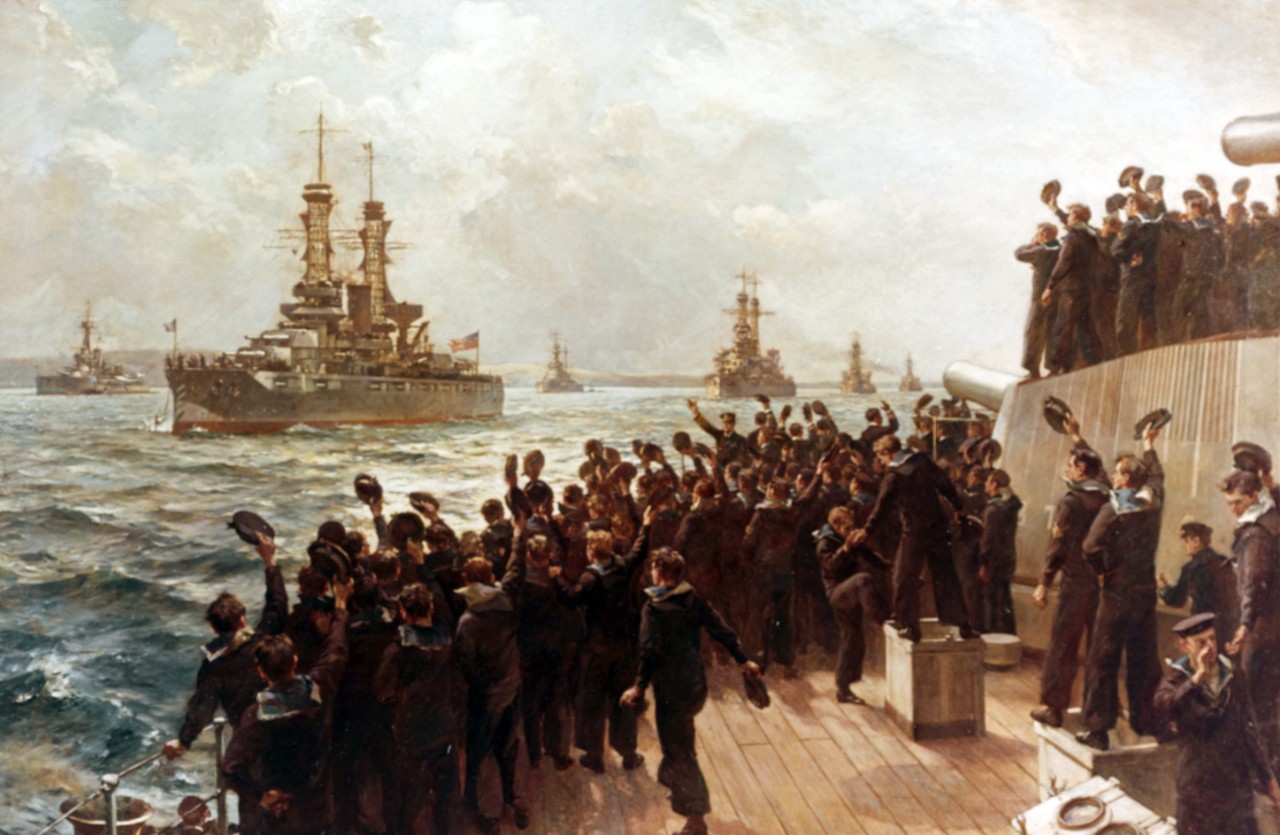
The American battleships are cheered as they arrive in Scapa Flow
Despite thawing naval relations between the two nations, there was continuing reluctance to dispatch battleships to Europe for fear of transgressing Mahan's commandments. It wasn't until November, when Admiral Benson, the Chief of Naval Operations, visited Britain, that the Admiralty finally prevailed. Benson made the case to Secretary of the Navy Josephus Daniels on the grounds that failing to send the ships would compromise the US diplomatically and be used as a weapon against battleship construction in the future. Daniels finally agreed, and plans were made to send Battleship Division Nine, composed of New York, Wyoming, Florida and Delaware.3 These were some of the better coal-burning dreadnoughts, and they set sail from Hampton Roads on November 25th, 1917, bound for Scapa Flow.
On the crossing, the ships ran into a storm that John McCrea, turret officer aboard New York and later the first captain of the Iowa, remembered as the worst he'd ever seen at sea, but despite the weather, the four ships arrived at the Grand Fleet's anchorage at noon on December 7th. Unlike the ground troops in France, who General Pershing had insisted would fight under American command, the ships would be fully integrated with the Grand Fleet, taking orders from Admiral Beatty like any other battle squadron. They would, however, be kept as a unified squadron and not split up, a concession to practicality as well as diplomacy. As soon as they dropped anchor, the commander of Battleship Division Nine, Hugh Rodman, went to pay Beatty a visit, reportedly remarking "I don't believe much in paperwork. Whenever you have anything to bring to my attention, come and see me." Beatty replied that he would do just that to the commander of what the British designated the Sixth Battle Squadron.
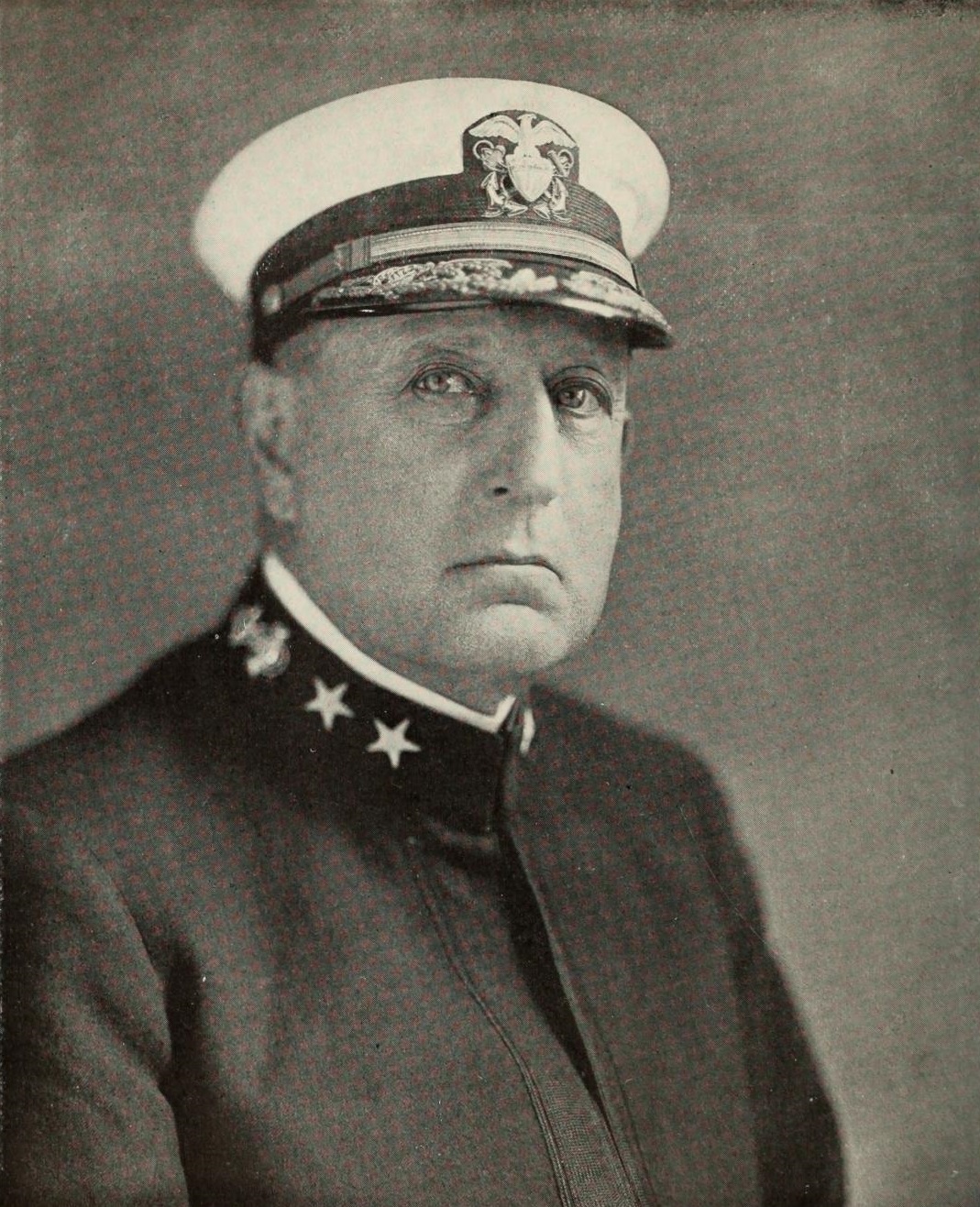
Hugh Rodman
Rodman realized that his ships would have a lot of work to do if they were to integrate smoothly with the Grand Fleet. The British had been at war for over three years, and during that time, they had gained a lot of experience operating at sea. To increase the challenge, Beatty had decided to place them on one of the wings of the Grand Fleet in cruising formation, because their machinery was in good condition, giving them a speed advantage of a knot or two over most of the rest of the fleet. Normally, they'd be in the rear when the fleet turned to form battle line, but if they had to deploy the other way, then it would place them in the lead. But the Americans set about learning the relevant skills, from lookouts who had to be able to distinguish between periscopes and driftwood to signal personnel who had to master British signal books. To help with the later task, the British assigned some of their signal personnel, although there was considerable friction because the British seamen, fairly senior, were ranked as ordinary petty officers, at least until Beatty convinced the Admiralty to classify them as chiefs instead.
The American ships were fortunate enough to spend the holidays at Rosyth, near Edinburgh, instead of in dreary Scapa, accompanying Beatty in Queen Elizabeth for some time in the yard. New York hosted 125 poor or orphaned children, and many officers were invited ashore by their British counterparts. The voyage served as a shakedown in British waters for the American ships, and on the way home, they went to the practice range at Pentland Firth for a full-scale practice shoot at 12,000 yards. The results were not good. In December, three British battle squadrons had shot at Pentland, averaging below 40 seconds per salvo, with spreads of 300 to 500 yards. Only New York came anywhere close to this, with 48-second intervals and an average spread of 464 yards. Delaware's 475-yard spread was reasonable, but her crews were much too slow, taking 108 seconds per salvo, while Wyoming and Florida saw average spreads of 956 and 1131 yards respectively. These results shook American self-confidence and made the British question the value of the Grand Fleet's latest additions.
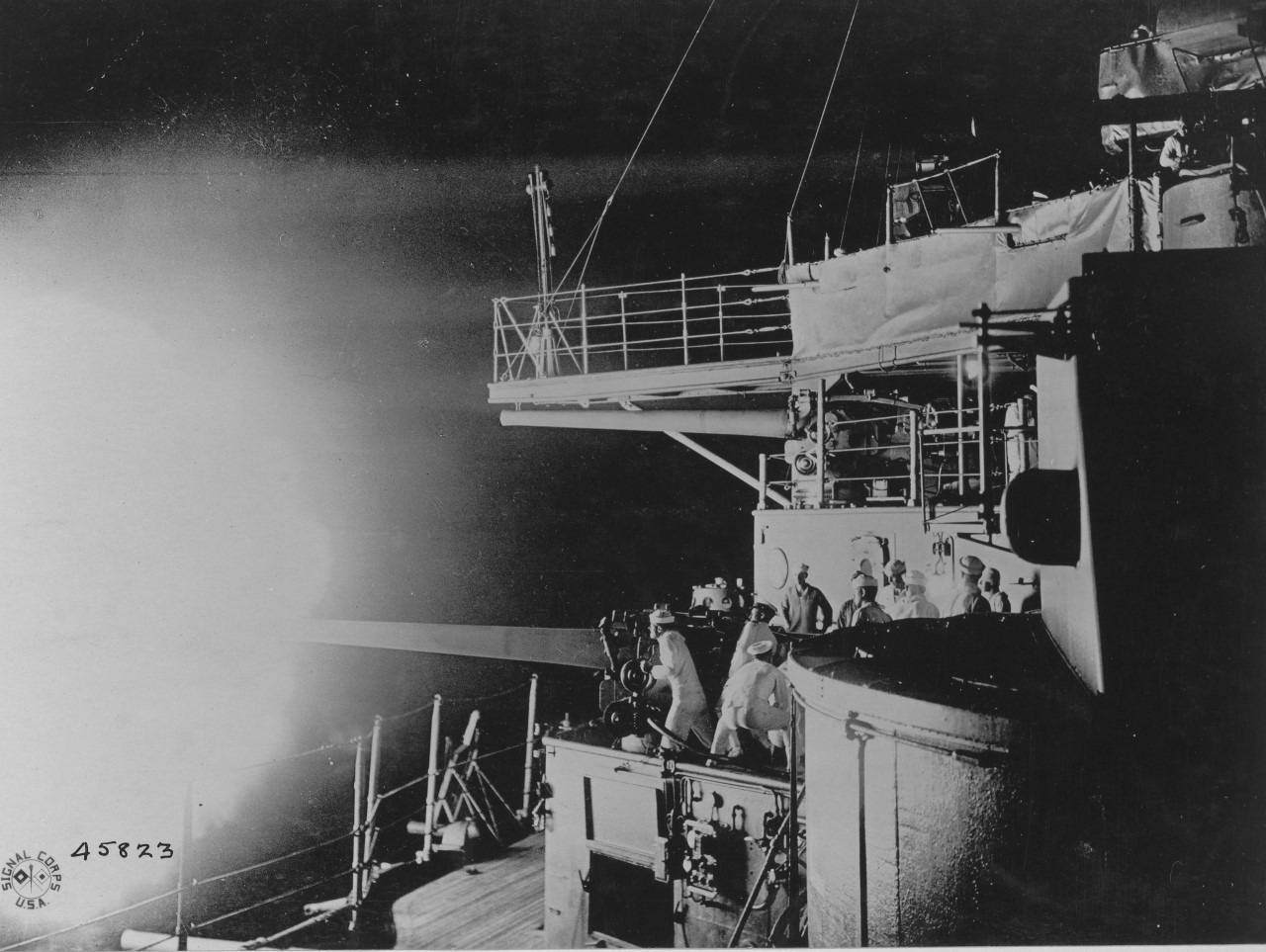
Wyoming conducts a secondary-battery practice in the North Sea
The American ships got another chance to operate with the Grand Fleet a few weeks later, when the entire force sortied for three days of maneuvers in the North Sea. By this point, their signal parties had gotten the British codebook down, and they had no trouble maneuvering with the British. This gave Beatty the confidence to give them their first independent assignment on February 6th, when the 6th Battle Squadron was dispatched as the core of the covering force for the convoy of merchant ships going to Scandinavia. This had been running for almost a year, but initially the main threat was U-boats. They were manageable enough, but in October and December 1917, German cruisers and destroyers had twice mauled the convoy as it crossed the North Sea, bringing an end to John Jellicoe's tenure as First Sea Lord and forcing the Admiralty to cover future convoys with a battleship squadron each. This was an exceedingly odd policy, as it clearly exposed the Grand Fleet to the threat of being picked off a bit at a time, a condition the Germans had hoped for and the British had gone to great lengths to make sure didn't happen. One source suggests that Beatty hoped to draw the Germans out, using the battleship escort as bait, but this is not mirrored in most of the places I consulted. CNO Benson pushed back quite hard on the plan, proposing that pre-dreadnoughts instead be used to reduce the risk to the Grand Fleet, even offering to send American ships to help with the task. Sims convinced him that it was good policy, on the assumption that British signals intelligence would pick up any sorties in time to get the Grand Fleet (based much closer to the convoy route) to sea.
When the American dreadnoughts sailed to cover the convoy, Admiral Rodman was placed in command of the entire escort, including some lighter units from the RN, the first time an American Admiral had command over British ships. The trip across the North Sea on the 7th was uneventful, with excellent weather, but the next day was more exciting. While steaming off the coast of Norway, waiting for the return convoy to form up, New York claimed to have seen a submarine, although one of the British destroyers quickly pointed out it was porpoises. However, as so often happens, this set off a whole chain of "submarine sightings" from the American ships, with Wyoming claiming to have seen a submarine on the surface, Florida trying to ram what she thought was a submerged submarine, and both Florida and Delaware maneuvering to avoid what lookouts took to be torpedoes. Later analysis proved skeptics who believed it was all the porpoises correct, as postwar records showed only two U-boats in the area, neither of which attacked the battleships. Fortunately, no harm was done, and the trip back to Britain was uneventful.
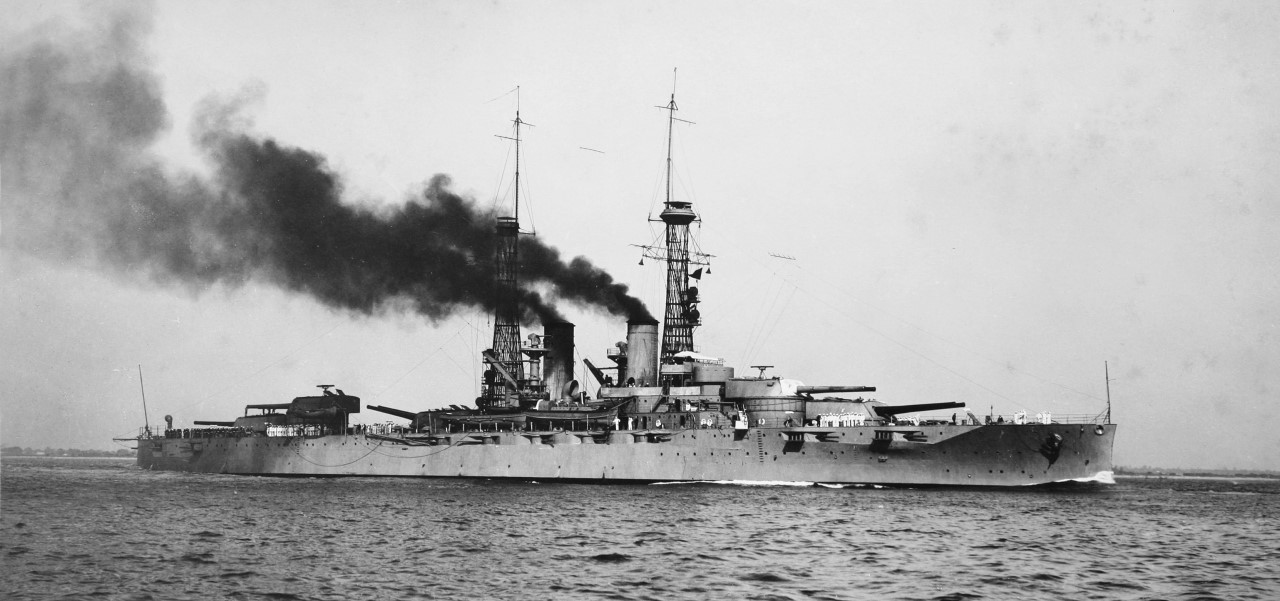
Texas shortly before her voyage across the Atlantic
A day after the 6th Battle Squadron returned from convoy duty, it was joined by a fifth ship, Texas, sister to New York. Texas had been dispatched as a spare to allow the squadron to maintain full fighting strength even as the ships were sent through the yards, a serious problem when the force was continually at four hours notice to get underway. This had taken some time to implement, as the Navy Department was reluctant to depart from traditional US battleship organization. Early plans had been to reduce the dependence on British docks by rotating the entire division of ships out, but the Admiralty was reluctant to accept this plan, given how long it had taken the 6th Battle Squadron to reach their standards. Sending the replacement ships across the Atlantic without withdrawing the vessels already over there was also discussed, but it was shot down due to insufficient support facilities in Britain. The British did hope this could be changed if Norway joined the war, bringing additional ports, but that never came to pass.
Texas would give the American squadron an advantage, as it now had two ships with 14" guns, and could be sure that it wouldn't be left underarmed even if New York was in the yard during an action. This also meant that if both ships were available, they could work well together, as the gunnery tactics at that point emphasized cooperative firing, which required matching armament. However, the rest of the division was still poorly-matched, and Rodman requested that Florida be replaced by Arkansas, sister to Wyoming. Even this would leave them a bit undergunned, and Rodman really wanted the newer Oklahoma and Nevada, but the oil shortage precluded this. Even Arkansas was too much of a request for the Navy Department in February, and Rodman was left with his mismatched squadron for the next few months.
But they would be a busy few months. The Norwegian convoys would continue, and the Americans would finally become a truly useful part of the Grand Fleet, eventually participating in their triumph at the end of the war. We'll take a look at that next time.
1 The famous quote from CNO Benson, "We would as soon fight the British as the Germans", was to Sims, and was probably more about not letting his Anglophilia blind him to American interests than an actual statement of policy. ⇑
2 This period wasn't entirely the Americans being wrong and the British being right. Pressure from the US was important in getting the British to adopt convoys, which the Admiralty didn't think would work. ⇑
3 Weirdly, each ship in this unit was from a different class. The only class of American coal-burner not represented was the South Carolinas, and they were significantly slower. I do not know why this was done. ⇑

Comments
I'm a bit surprised at their interpretation of Mahan. Keeping your forces together is all about being able to win decisive battles. What decisive battle was in the cards other than one triggered by a High Seas Fleet sortie into the North Sea?
Concentration of force would seem to demand that you pack as much into the Grand Fleet as you can, because that is the main battle fleet which will fight any decisive battle that might occur. Simply keeping your ships in American ports is splitting your fleet, even if all of them happen to be together.
Yeah, it doesn't make much sense to me either. I'd say that I thought it was a legacy of America's general isolationism, but frankly navies always seem to have been quite independent, and this is the first case I know of of navies actually integrating like this. There were other cases in the Med in WWI where they tried and national pride meant it was a complete failure.
What was the plan that required sacrificing 20 ships? Were those to be sunk as blockships or was that the expected losses during the operation?
They were to be used as blockships. Expected losses would have added to that.
It's a bit surprising that they didn't react to it by asking for a plan that didn't involve sinking old ships as blockships (is that what the BB at the start of BB-61 means?).
I can't think of any other plan, and I'm sure if the USN could, they would have. It wasn't that the Admiralty was needlessly dragging its feet here. They were 100% right that going and and trying to attack at source would have been a terrible idea given the technology of the day. The USN just didn't understand that until it was shown to them.
Blockship? No, it's battleship.
Can you go a bit more into depth on why a direct assault would have been so costly and suicidal? From my understanding of the operations undertaken against the ports at Zeebrugge and Ostend, the Admiralty only intended to sink a handful of obsolete cruisers as blockships rather than 20+! ships including BBs. Bombardments from monitors were relatively ineffectual, but those monitors only had a handful of heavy guns. What was stopping the Entente + Americans from coming back every week with an entire battle squadron of BBs and shelling the place until they scored the requisite hits to disrupt U-boat operations?
This wasn't just an attack on Ostend and Zebrugge. It was also on the German coast. And while the Germans did put a fair bit of effort into defending the Belgian coast, it wasn't as heavily fortified as the German coast. (I think. Details are not really available in English.)
As for why they couldn't just come back repeatedly, coastal waters were and are very dangerous. Mines, MTBs and U-boats would all be very serious threats, likely to take a toll of the bombarding ships. Note what happened at Gallipoli, against much lighter opposition than would be expected off the German coast. It wasn't going to work.